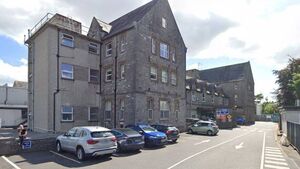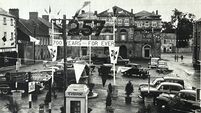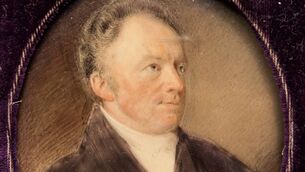Bygone days of hypnosis before surgery at Naas Hospital

This building at Naas Hospital was once the children's accommodation in the old workhouse
MANY of my readers were aware that I was hospitalised in recent weeks. I was discharged last Monday from Beaumont Hospital where I received the latter six weeks of radiotherapy. The nursing staff in St Ann’s Ward provided a most extraordinary service and one which prompts me to write this article and to draw a comparison with my previous contact with hospital services, admittedly of another era.
I was admitted to Naas Hospital in 1966 following an appendicitis diagnosis by Dr Joe O’Neill. There I was operated on by the legendary South African surgeon, Dr Jack Gibson, who hypnotised me instead of using conventional anaesthesia. The operation was successful, but I wonder if Dr Gibson would be allowed to practice his undoubted skills today.
This was not so many years after issues were raised in Naas Hospital concerning the absence of basic medical equipment including a blood pressure machine. It required approval by Dr Ward, parliamentary secretary to the Minster for Local Government and Public Health, before that most basic health equipment could be purchased.
What I found extraordinary different between my Naas Hospital experiences was the high level of nursing care today compared to then. Numerous checks are today made on every patient every few hours for blood pressure, temperature, pulse rate, respiratory rate, blood sugar and other blood tests. It was a continuous medical examination which commenced as early as 6am. The results were noted on one’s hospital charts which were constantly consulted throughout the day.
The Naas operation occurred approximately one year after another Naas Hospital event which was irreplaceably fixed in my memory. My first ever job was as a Clerical Officer with Kildare County Council where I served in the Health Services Section under the Staff Officer Noel Finn. County council staff were small in numbers in those days and may I say apparently much more efficient than council officials today.
Kildare County Council were responsible for the provision of health services in Co Kildare under the guidance of the late Dr Brendan O’Donnell. As part of my duties, I occasionally visited Naas Hospital and St Vincent’s Hospital, Athy to check on some accounts.
It was in Naas Hospital, then housed in what was the former Workhouse, a four-storey building with no lift that on one official visit I was committed to helping the lone porter carry a dead man down from the fourth floor. I can hardly imagine that happening in today’s hospitals and brings to mind the readily available porters in Beaumont Hospital.
Medical science has made extraordinary advances in the intervening years and ward sisters and nurses taking responsibility for caring, treatment and diagnosing.
I found the Beaumont experience quite extraordinary. From bed making early in the morning to monitoring patients’ meals, to carry out the numerous medical checkups during the day, the nurses displayed an empathy and care which was quite exceptional.
The vast majority of the young nursing staff in the Beaumont ward were of Eastern European origin. Some born in Ireland, others having qualified in their home country and then came to Ireland. Others emigrated and are now attending the nearby DCU Nurse training course.
The senior nursing staff were apparently all Irish but uniquely those who dealt with patients on an almost hour by hour basis were non-Irish. It reminded me of the UK hospital regime of the 1950s where Irish nurses played a major role in staffing hospital wards in the absence of UK nurses.
Were you one of the many households contacted within the last few days by telephone by Bord na Mona to advise of a change in the refuse collection days? Apparently the multi-million profit making company will not issue any letters or send texts to advise of the new changes. This seems an extraordinary poor way to communicate with customers, and I wonder if the next price increase will be communicated in the same way.
I wish to say thank you to the lady who sent me a photograph of the work being carried out by the ESB which resulted in blocking a major part of the Ernest Shackleton mural at the end of Meeting Lane. The work was carried out on a piece of ground owned by Kildare County Council, and I must assume that both Kildare County Council and the ESB agreed on where the ESB box was to be erected.
It surely would have been as easy for both to move the ESB box a few yards to the left where it would not obscure the Ernest Shackleton mural.





